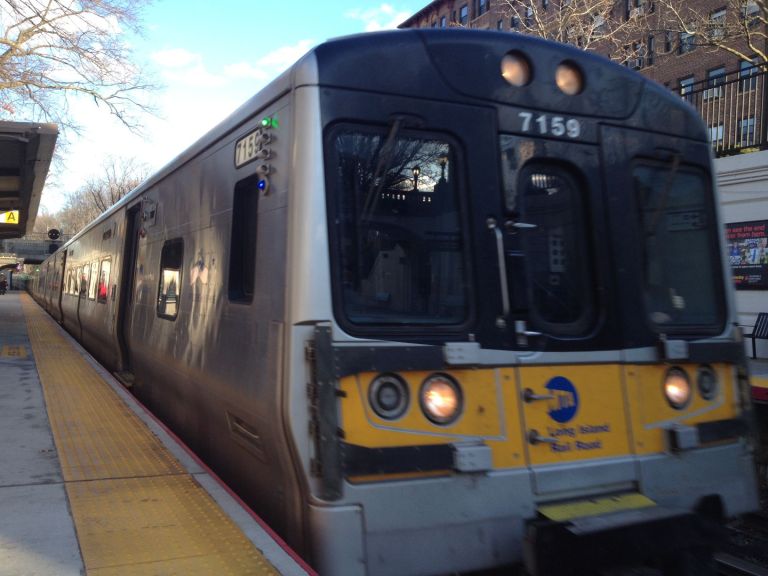
New Hyde Park and Mineola officials heard more from state engineers last week about possible plans for eliminating street-level Long Island Rail Road crossings to make way for a third track.
State Department of Transportation engineers presented about a dozen options for removing Mineola’s two crossings, Mayor Scott Strauss said.
But their primary plan for New Hyde Park would involve closing Covert Avenue for about a year to send the road underneath the tracks, Mayor Robert Lofaro said, which he said is “just not workable.”
“We said to them, ‘At this point we need you to go back to the drawing board and really be creative here,’” Lofaro said.
Engineers met last month with officials in communities with the seven street-level crossings along the 9.8-mile stretch of the LIRR’s Main Line where Gov. Andrew Cuomo and the Metropolitan Transportation Authority want to add a third track.
Cuomo has pledged to eliminate the crossings, which he says endanger safety, back up traffic and add to train noise, in his $1.5 billion plan as he tries to distinguish it as less invasive than one the MTA proposed in 2005 and abandoned three years later.
In an April 20 meeting, engineers and representatives from the MTA and Cuomo’s office told New Hyde Park and Garden City officials that sending traffic underneath the tracks would be the most feasible way to eliminate the at-grade crossings at Covert Avenue, South 12th Street and New Hyde Park Road, Lofaro said.
Engineers told them each crossing would take six to nine months to finish, he said.
While the village has been in “listening mode” since Cuomo announced the third track in January, this proposal creates major concerns about road closures congesting traffic and construction “irrevocably” impacting nearby residential and commercial properties, Lofaro said.
“From my perspective I’m looking for a solution, or to get a solution recommended, that will have again the least impact on the way the village traffic currently flows and that’s not what we’re seeing right now,” he said. “It’s more about how cars can flow through the village as opposed to how cars flow in the village.”
New Hyde Park and Garden City officials were set to meet with planners again on April 27, Lofaro said.
Cuomo transportation spokeswoman Beth DeFalco did not respond to questions about specific plans for at-grade crossings, but she said planners will be holding many meetings with local officials as they try to determine what works best for each community.
Each crossing has its own complicated process, she said, and planners will present specific proposals to the public once they have solidified what will work.
Strauss said planners were not pushing any one of the 12 or 13 plans for Mineola’s grade crossings at Willis Avenue and Main Street in their April 20 meeting with him, Village Clerk Joseph Scalero and Trustee Dennis Walsh.
The possibilities included taking the roads above or below the tracks, installing or omitting pedestrian walkways, making streets one-way and building parking garages near the tracks.
The officials favored a roadway underpass rather than an overpass, Strauss said, but they ultimately will have to consider the impact of the third track itself on the village’s downtown revitalization and residential development efforts.
“I got to give kudos to them — they are out there, they’re saying, ‘Meet with us, meet with us, meet with us,’ but I really need to see that third-track plan so we can put it all together,” Strauss said. “The grade crossings are just one piece of the puzzle.”
Cuomo’s plan has galvanized opposition and support for the third track, which has been intermittently proposed since the 1980s.
Despite the governor’s assurances that it would be built within the LIRR’s existing right of way and not take any residential properties, local opponents say communities would bear the brunt of construction without reaping any benefits.
Proponents, including business groups, corporations and non-profits, say the track would ease commutes, boost Long Island’s economy and complement the MTA’s East Side Access project to put an LIRR station at Grand Central Terminal in Manhattan.






